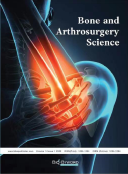Abstract
Additive manufacturing technologies are becoming increasingly popular in the field of medicine. Advances in laser-based techniques, which can also be used to print metals, have made it possible to produce fully customized, biocompatible implants, which are a major breakthrough in the treatment of bone defects. The University of Debrecen is involved in the production of such implants. On the basis of the available literature and preliminary experience, the individualization of implants, the implantability and material requirements, and the novelties offered by the technology are summarized in this paper.
References
Meskó B, 2015, 12 Things We Can 3D Print in Medicine Right Now, viewed November 29, 2017, https://3dprintingindustry.com/news/12-things-we-can-3d-print-in-medicine-rightnow-42867/
Nagy J, 2011, Medical Technology Application of Biocompatible Materials, viewed November 29, 2017, https://adoc.pub/1-bevezetes-nagy-jozsef-1.html
Oláh L, 2004, Polymer Technical Aspects of Implant Materials. Journal of Material Testers, 2004(2): 63–65.
Nouri A, Hodgson PD, Wen C, 2010, Biomimetic Porous Titanium Scaffolds for Orthopedic and Dental Applications, in Biomimetics: Learning from Nature, InTechOpen. https://doi.org/10.5772/8787
Oldani C, Dominguez A, 2012, Titanium as a Biomaterial for Implants, Recent Advances in Arthroplasty, in Recent Advances in Arthroplasty, InTechOpen. https://doi.org/10.5772/27413
Wang W, Poh CK, 2013, Titanium Alloys in Orthopaedics, Titanium Alloys – Advances in Properties Control, viewed November 29, 2017, https://www.intechopen.com/books/titanium-alloys-advances-in-properties-control/titanium-alloys-in-orthopaedics
Niinomi M, Masaaki N, 2011, Titanium-Based Biomaterials for Preventing Stress Shielding Between Implant Devices and Bone. International Journal of Biomaterials, 2011: 836587. https://doi.org/10.1155/2011/836587
Hosseini S, 2012, Fatigue of Ti-6Al-4V, in Biomedical Engineering – Technical Applications in Medicine, InTechOpen, 76–92. https://cdn.intechopen.com/pdfs/38773/InTech-Fatigue_of_ti_6al_4v.pdf
Interactions and the Structure of Matter: Crystal Lattice, n.d., viewed November 29, 2017, http://tudasbazis.sulinet.hu/hu/szakkepzes/elektronika-elektrotechnika/a-muszaki-palyak-vilaga-elektronika-alapfogalmai/kolcsonhatasok-es-az-anyag-szerkezete/kristalyracs
Stangl R, Rinne B, Kastl S, et al., 2001, The Influence of Pore Geometry in cp Ti-Implants. Eur Cell Mater, 2: 1–9 https://www.ncbi.nlm.nih.gov/pubmed/14562260.12
Warnke PH, Douglas TEL, Wollny P, et al., 2009, Rapid Prototyping: Porous Titanium Alloy Scaffolds Produced by Selective Laser Melting for Bone Tissue Engineering. Tissue Eng Part C Methods, 15(2): 115–124
Wysocki B, Idaszek J, Szlazak K, et al., 2016, Post Processing and Biological Evaluation of the Titanium Scaffolds for Bone Tissue Engineering. Materials (Basel), 9(3): 197. https://doi.org/10.3390/ma9030197
Dobrzanski LA, Dobrzanska-Danikiewicz AD, Achtelik-Franczak A, et al., 2016, Porous Selective Laser Melted Ti and Ti6Al4V Materials for Medical Applications, in Powder Metallurgy – Fundamentals and Case Studies, InTechOpen. https://www.intechopen.com/books/powder-metallurgy-fundamentals-and-case-studies/porous-selective-laser-melted-ti-and-ti6al4v-materials-for-medical-applications
Balamurugan KG, Rajendran DK, 2016, A Review on Status of Research in Metal Additive Manufacturing, in Advances in 3D Printing & Additive Manufacturing Technologies, Springer Singapore, 95–100.
Kodácsy J, Pintér Z, Pokriva P, n.d., Quality of Surfaces Produced by the Reverse Engineering Method, viewed November 29, 2017, https://www.muszeroldal.hu/measurenotes/reverse_engineering.pdf
Jardini AL, Larosa MA, Bernardes LF, et al., 2011, Proceedings of the 6th Brazilian Conference on Manufacturing Engineering, April 11–15, 2011: Application of Direct Metal Laser Sintering in Titanium, Caxias do Sul.
Sánta I, 2012, Special Laser Beam Technologies, DocPlayer, viewed November 29, 2017, https://docplayer.hu/2760445-Kulonleges-lezersugaras-technologiak-santa-imre.html
Project Plan – 3D Printer, n.d., viewed, November 29, 2017, https://wiki.aalto.fi/display/MEX/Project+plan+-+3D+Printer
Additive Manufacturing Technologies: An Overview, viewed November 29, 2017, https://www.3dhubs.com/knowledge-base/additive-manufacturing-technologies-overview#/
Mangano FG, Chambrone L, van Noort R, et al., 2014, Direct Metal Laser Sintering Titanium Dental Implants: A Review of the Current Literature, 2014: 461534. https://doi.org/10.1155/2014/461534
Bineli ARR, Peres APG, Jardini AL, et al., 2011, Proceedings of the 6th Brazilian Conference on Manufacturing Engineering, April 11–15, 2011: Direct Metal Laser Sintering (DMLS) – Technology for Design and Construction of Microreactors, Caxias do Sul.
EüM Decree on Medical Devices, n.d., viewed November 29, 2017, https://net.jogtar.hu/jr/gen/hjegy_doc.cgi?docid=A0900004.EUM
